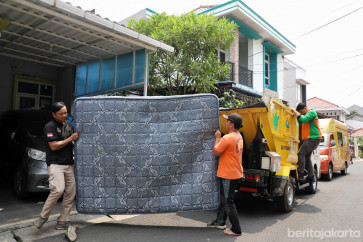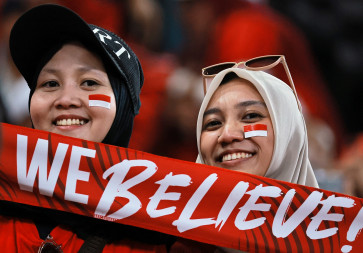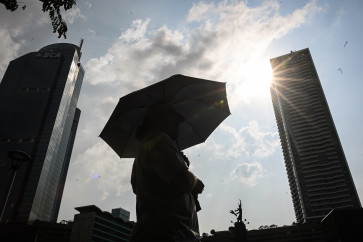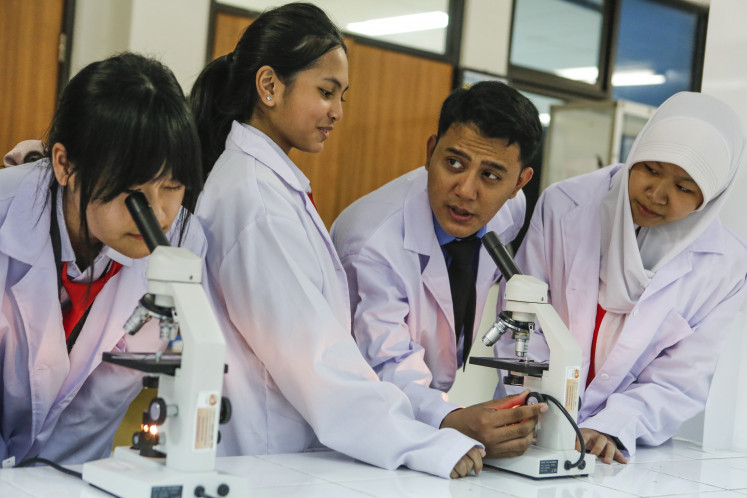Popular Reads
Top Results
Can't find what you're looking for?
View all search resultsPopular Reads
Top Results
Can't find what you're looking for?
View all search resultsToni el Suizo: Building bridges for the poor
Toni Rüttimann, better known as Toni el Suizo, is the Don Quixote of the 21st century
Change text size
Gift Premium Articles
to Anyone
T
oni Rüttimann, better known as Toni el Suizo, is the Don Quixote of the 21st century. His life is dedicated to building bridges.
Through his bridge building, he has devoted his life to the poor and acts in the name of humanity, a sometimes forgotten value in the modern world.
Toni El Suizo: JP/Esmeralda Hendrix
In the past 24 years, he has built more than 550 pedestrian bridges, from Ecuador, Columbia, Mexico and Honduras to Cambodia, Laos, Vietnam, Myanmar and Indonesia. He has helped more than 1.5 million people through these projects.
Toni, born and raised in Switzerland, went to Ecuador when he was 19 years old.
“When I was just 19 years old, I saw the earthquakes in Ecuador on television and I wanted to help the people who were affected by the earthquakes of 1987,” he said.
So he traveled in Ecuador for 6 months, where he first learned the skills necessary to build bridges.
“With all these rivers, and an earthquake which destroyed a lot, including the bridges, people had to walk for hours or days to cross the river. A bridge overcomes obstacles; it increases mobility and links people and places.”
When he got back in Switzerland, he started studying civil engineering at the University of Technology in Zürich. After 6 weeks, he knew that the life he was living in Zürich, in comfort and luxury, was not the life he wanted.
“So I quit my studies at Christmas, which is probably not the best time to tell that to your parents. Against the critiques and good intentions of my parents, I decided I wanted to go back to Ecuador to help the poor.”
But soon he questioned whether his life mission was really the right decision.
“After two weeks, I got malaria, and in the few moments of clarity I asked myself, ‘Toni, is this what you wanted?’ I was having a tremendous fever, on and off, and I was stuck in the jungle.”
But he stayed in Ecuador for ten years with his dedicated colleague, Walter Yánez, a professional pipe welder.
“I learned building bridges from other people, and in every country I have a colleague, my ‘Sancho Panza’, who helps me do the job.”
Toni has traveled through Latin America and Southeast Asia, following places stricken by natural disasters, like Quixote fighting against the windmills.
In all those years, no one has been seriously injured in the projects. But, Toni was paralyzed for two years by Guillain-Barré Syndrome (GBS) in Cambodia.
“I ate food that was infected by a bacterium which led to the GBS. It destroys the muscles and damages the nerves. The doctors didn’t know if I would walk again because it depends on whether you recover or not.”
But even then, confined to his hospital bed in Thailand, he did not stop working.
“When I was paralyzed, I worked on my laptop with my two thumbs and a pencil in my mouth. I created software that converts the data for a bridge. That made our work, logistically, much easier, and my friend in Ecuador could start building without me.”
In the past 9 months, he has built 14 bridges in Indonesia, from Banten to Central and East Java.
“Building a bridge is easy, a small one takes a few hours to assemble, but together with the drying time of the foundation it eventually takes a month. Meanwhile, I travel to my other projects.”
The materials used are scrap or gifts from companies. “I do everything for free, and I receive the material for free, such as the steel and the pipes which I got from the Krakatau Steel company and from Tenaris Siderca, a steel pipe company of Argentina. And the cables came from a cable company in Switzerland.”
The bridges are not a result of a company or an NGO. As a community, local residents build the bridges.
“The local residents provide local resources and raw materials. Some companies provide the steel, pipes and cables. As a team, we transfer the pipes with trucks or by foot, carrying the heavy pipes on our shoulders to the site. Together we build these bridges which connect people, not only physically but also in a spiritual way. We are constructing a path, together as a united community.”
But dedicating your life for the common good is in some way also a hard life. “I don’t have a home to stay in, I always travel with just two bags, so it is difficult to settle and start a family.”
He plans to slow down a bit, to settle for a while in Myanmar to write a book about his incredible journey.
“But the sacrifices I have made are absolutely worth it. I live my life in the name of humanity. Seeing what we can do and what we can overcome, to help so many people in need.”
As modest as this man is, he said: “Don’t thank me, thank them, the people who made these bridges, all together as a community.”










